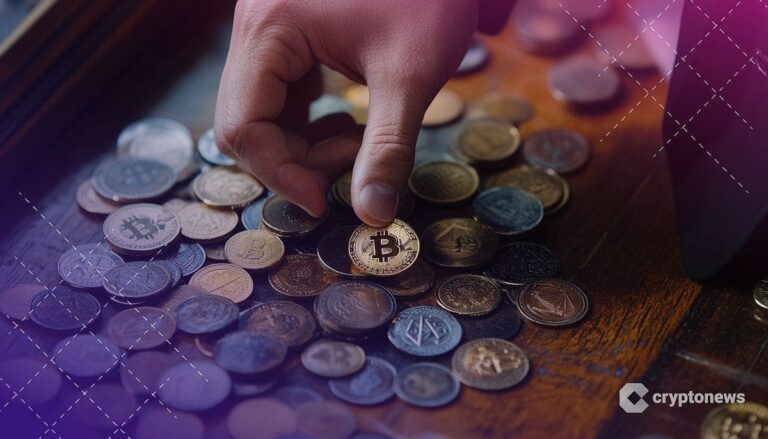When you buy your first cryptoasset, such as Bitcoin, you need to decide where to put it. A crypto wallet acts not only as an ultra-secure digital vault, but also as the app you use to manage your cryptocurrencies and digital assets. The best crypto wallets enable you to send and receive cryptoassets, trade between cryptos, discover new ways to use your cryptoassets, get market updates and news, and even interact with smart contracts. In this guide we’ll take you through the key factors to consider when choosing a crypto wallet.
Security
It’s important that your wallet app have a first line of defense in the event your device falls into the wrong hands. This means your wallet should, by default, require that you unlock it every time you want to use it. Unlocking by PIN is acceptable, but can be inconvenient if you’re using your wallet regularly. The Bitcoin.com Wallet integrates facial or fingerprint recognition, making access a breeze while maintaining the highest level of security.
Reputation
The reputation of the wallet maker is one of the most important factors because it’s entirely possible for a wallet to have built-in security flaws (whether by design or by accident) that put your cryptoassets at risk. To check that the wallet is on the up and up, search for it on forums such as the Cryptocurrency Reddit or the Bitcoin.com Forum to see what people are saying about it.

The Bitcoin.com Wallet has been around since 2017 and is used actively by millions. You can see what people are saying about it in the above mentioned forums, as well as on the App Store, Google Play, and Trust Pilot.
Access to private keys (owning your cryptoassets)
If you don’t have access to the ‘private keys’ for your cryptoassets, technically you do not have control over your crypto – so make sure your wallet provides you with access to your private keys.
The private keys for crypto addresses take the form of randomly generated 12 or 24-word passphrases, and each crypto address has its own private key (passphrase). Whoever is in possession of the private key for an address, has complete control over the crypto associated with that address. This means if you’re using a wallet that doesn’t give you access to your private keys, you have nothing more than a claim to your cryptoassets; someone else is taking custody (and control) of them. In the event that, for example, your custodian goes bankrupt, in all likelihood you’ll never see your cryptoassets again.
Additionally, when you don’t hold the private keys to your cryptoassets, every time you want to use them (eg. send them), you need to ask for permission from the custodian (since the custodian is the one in control). Problem is, the custodian may, for example, delay your send request by days and charge additional fees to “let” you use your cryptoassets. By contrast, when you have the private keys, you’re interacting directly with the cryptoassets’ public blockchain, so there’s no middleman.
The Bitcoin.com Wallet of course provides you with access to your private keys. Importantly, generating your private keys using the Bitcoin.com Wallet is done exclusively on your device. This means that only you will have access to your private keys (not Bitcoin.com nor anyone else).
Back up features
The best wallets make it easy to manage (back up) all your private keys. While it’s important to possess the private keys to your cryptoassets, managing those keys can be an onerous task. There are a few reasons it’s difficult:
First, for most people, the safest way to store private keys is by writing them down on paper and keeping that paper somewhere safe. Read more on password management best practices here.
Second, you may want to have more than one wallet. For example, you may want a savings wallet and a spending wallet – and for each wallet you’ll have a different private key that you must manage.
Finally, if you’re using a multi-coin wallet (like the Bitcoin.com Wallet), you’ll have at least one private key for every different blockchain your wallet supports. If you start trading using multiple cryptoassets on multiple chains, managing all your keys can be a lot of work.
A wallet with private key management features, also known as back up features, makes the process a lot easier. The Bitcoin.com Wallet offers ‘Cloud Backup’ for your private keys. With this feature, all of your private keys are saved in the cloud (Apple or Google) and whenever you create a new wallet, the new private keys for it are automatically backed up to the cloud. Note that the keys are stored in encrypted form and you create a single password of your choosing that decrypts them. If you lose access to your device, you’ll just need to re-install the app, sign in (via Apple or Google), and enter your Cloud Backup password to restore access to all of your wallets and all of your cryptos. By contrast, without this feature, you’d need to enter all of your 12 or 24-word passphrases for all of your wallets and cryptos in order to restore access to them.
Fee customization
The best wallets make it easy to customize the fees you pay to public blockchain validators/miners. Look for a wallet that has convenient presets like fast, medium, and slow. When you choose fast, for example, you’ll pay a higher fee, but your transaction will complete in less time. It’s also nice to have the option to choose exactly the fee you pay for each transaction. In the Bitcoin.com Wallet, for example, you can decide the precise byte/satoshi rate for Bitcoin transactions and the exact gas price for Ethereum transactions.
Multisig (shared wallets)
A nice feature to have in a wallet is the ‘multisig’ option. A multisig wallet is one that requires more than one person to approve transactions. For each multisig wallet, you decide 1) how many participants it has, and 2) how many of the participants are required to approve transactions. For example, a “3 of 6 multisig wallet” would have six participants and require at least three of them to approve any transactions. Any of the six participants can propose a transaction, but at least three must ‘sign’ or approve it.
This feature can be used to improve security for a wallet. For example, imagine a multisig wallet where three people in your family are participants, and 2 of 3 are required to approve transactions. This would protect your funds in the event one of the three people loses their private key. It would also protect your funds in the (albeit highly unlikely) event that one of the three people is kidnapped by would-be cryptoasset thieves.
The other key use case for a multisig wallet is to manage the treasury of an organization. Here, the wallet can be set up such that, for example, 3 of 6 board members must sign a transaction to approve a spending request.
Other features
The best crypto wallets today are extremely easy to use and integrate a lot of convenient features. Here are some to look out for:
Personal notes
It’s nice to be able to add text to your transactions to remind you who sent what, when, and where.
Display currency
Most wallets allow you to toggle between displaying your currency in crypto units and local currency. It’s also nice to be able to switch between local currencies such as USD, GDB, and EUR.
Unlimited wallet creation
This is a nice feature because it makes it easier to organize your funds as you see fit.
Summary
While we do recommend the Bitcoin.com Wallet as the best-in-class software wallet, there are plenty of quality crypto wallets out there.
















 Bitcoin
Bitcoin  Ethereum
Ethereum  Tether
Tether  XRP
XRP  Solana
Solana  USDC
USDC  Dogecoin
Dogecoin  Cardano
Cardano  TRON
TRON